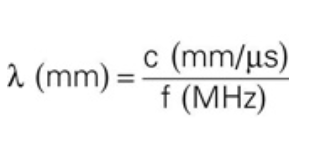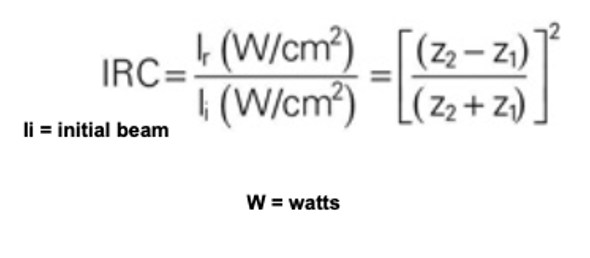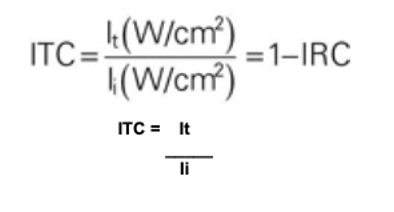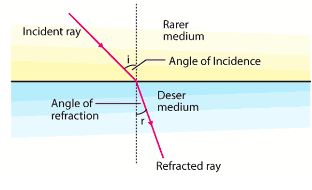Ultrasound Physics Lecture Notes- for Exam 1
1/242
Earn XP
Description and Tags
Chapt 1 and 2
Name | Mastery | Learn | Test | Matching | Spaced |
|---|
No study sessions yet.
243 Terms
Infra Sound
Sound with a frequency less than 20 Hz.
Human Hearing Range
The frequency range of sound perceivable by humans, typically 20–20,000 Hz. (20hz to 20khz
Ultrasound
Sound with a frequency greater than 20,000 Hz.
Diagnostic Ultrasound Range
The frequency range used in medical imaging, typically 2,000,000 - 18,000,000 Hz.
Mega (M)
A unit prefix representing a factor of 1,000,000.
Kilo (k)
A unit prefix representing a factor of 1,000.
Centi (c)
A unit prefix representing a factor of .01
Milli (m)
A unit prefix representing a factor of 0.001
Micro (µ)
A unit prefix representing a factor of 0.000001.
Direct Relationship
When two variables change in the same direction (both increase or both decrease).
Inverse Relationship
When one variable increases, the other variable decreases.
Diagnostic Ultrasound
The use of ultrasound in medical-related anatomic and flow imaging.
Doppler Ultrasound includes what 3 things?
Includes the detection, quantization, and evaluation of motion using ultrasound.
Doppler Effect
A change in frequency caused by moving objects.
Pulse-echo Principle
The process of transmitting short pulses of ultrasound into the body and then listening for the returning echoes that bounce back from internal structures.
B-scans (Grey Scale)
Images produced from the pulse-echo principle where returning echo strength is converted to a brightness on the screen.
Volume Imaging another term for?
Another term for 3D scanning and imaging.
Pulse-echo Technique
A method where positional information is determined by knowledge of the pulse direction and measurement of the time it takes for each echo to return to the transducer. It relies on range.
Range Equation
The formula d = 1⁄2 (c x t)
where d is distance, c is propagation speed, and t is round trip travel time.
½ is becomes you want the info for one pulse going one way not roundtrip
Range (Ultrasound)
The machine’s ability to accurately calculate the distance from the transducer to an echo-generating structure.
Assumed Speed of Sound (c)
In ultrasound, it is typically assumed to be 1.54 mm/µs (1,540 m/s).
Sound
A traveling variation of pressure through a medium in a mechanical motion that causes particles in the medium to vibrate back and forth.
Wave
A mechanism which transfers energy from one location to another.
Electromagnetic Waves
Waves that transfer energy through an electric and a magnetic field and can exist in a vacuum or a medium (e.g., visible light, X-rays).
Mechanical Waves
Waves that require a medium (solid, liquid, or gas) to propagate and transfer energy and cannot travel through a vacuum.
Longitudinal Waves
Waves where the particles in a medium move parallel to the direction of wave propagation.
While the wave travels in one direction, the particles of the medium move back and forth along the same direction
Transverse Waves
Waves where the particles in a medium move perpendicular to the direction of wave propagation.
While the wave travels in one direction, the particles of the medium move up and down or side to side, perpendicular to that direction.
Typical Wavelength Unit (US)
In ultrasound, wavelength is usually measured in millimeters (mm).
Compressions
Regions of high pressure and density in a sound wave.
Rarefactions
Regions of low pressure and density in a sound wave.
7 Parameters of Sound
Period, Propagation Speed, Frequency, Wavelength, Power, Amplitude, Intensity.
Frequency
The number of cycles (or oscillations) of a sound wave that occur in 1 second.
Cycle (Wave)
One complete variation in pressure of a wave.
Period Unit
In ultrasound, period is typically measured in microseconds (μs).
Frequency is determined by?
Determined by the transducer selection and machine settings (the source) in diagnostic ultrasound.
Frequency Unit
Hertz (Hz).
Period (T)
The time it takes for one complete cycle to occur, inversely related to frequency (f).
Wavelength definiton
The distance between two consecutive points in phase
(e.g., two consecutive compressions or rarefactions).
Propagation Speed is defined as what? And what units does it use?
The speed of sound in a medium, measured in meters/second (m/s) or millimeters/microsecond (mm/µs).

What is this formula for?
Wavelength formula
λ (mm) = c (mm/µs) / f (MHz),
where λ is wavelength, c is propagation speed, and f is frequency.
Attenuation (a)
The reduction or weakening of the strength of a signal as it travels through a medium.
Intensity and what are its units?
The concentration of energy in a sound beam, measured in milliwatts/cm² (mW/cm²) or watts/cm² (W/cm²).
Attenuation Units
Expressed in decibels (dB).
What are the Causes of Attenuation
Absorption, reflection, and scattering of sound waves.
Attenuation Limits what ?
Limits imaging depth, requiring the machine to compensate to create a diagnostic image.
Propagation Speed Order in Tissues (Slowest to Fastest)
Lung, Bone, Liver, Brain, Blood, Fat, Muscle
Slowest – Lung
Fat
Brain
Liver
Blood/Muscle
Fastest = Bone
Soft Tissue Propagation Speed
1,540 m/s.
Attenuation and Frequency Relationship
Attenuation increases as frequency increases (direct relationship).
Penetration and Frequency Relationship
Penetration decreases as frequency increases (reciprocal/inverse relationship).
High Frequency Transducer is used to eval what?
Used to evaluate anatomy closer to the surface.
Low Frequency Transducer is used to eval what?
Used to evaluate deeper anatomy where more penetration is needed.
Decibel Values (3 dB)
Represents an intensity reduction of 50% (½).
Decibel Values (10 dB)
Represents an intensity reduction of 90% (1/10).
Attenuation Coefficient (ac)
The attenuation that occurs with each centimeter the sound wave travels, measured in dB/cm.
Amplitude (Sound)
The strength, volume, or size of a physical quantity; the height; the maximum variation that occurs in an acoustic variable.
Does amplitude relate to frequency, wavelength or period?
NO! It Does NOT relate to frequency, wavelength, or period.
It does have something to do with the intensity and power though
Amplitude Units (US)
Measured in decibels (dB), volts (V), Watts (W), etc.
Impact of Amplitude
Determines the loudness or intensity of the sound; larger amplitudes result in louder sounds / stronger ultrasound signal , but also increased tissue damage.
Power (Sound)
The rate that work is performed or the rate of energy transferred, measured in Watts (W) and milliwatts (mW).

What is this formula?
I (mW/cm²) = P (mW) / A (cm²), where I is intensity, P is power, and A is area.
Constructive Interference
Occurs when the crests and troughs of interacting waves align, resulting in a wave with a higher amplitude and increased sound intensity.
Destructive Interference
Occurs when the crest of one wave aligns with the trough of another, causing them to cancel each other out, resulting in a wave with a lower amplitude (possibly zero) and leading to dead spots or silence.
Intensity Ratio
The fraction of the original intensity remaining after attenuation.
Harmonics
The even and odd multiples of the fundamental frequency.
Harmonic Imaging
A technique that uses the nonlinear behavior of tissues or contrast agents when exposed to ultrasound waves to produce clearer and higher-resolution images and reduce artifacts
The more distorted a wave, the _______ the harmonics
the stronger the harmonics
Concept of Harmonics in Ultrasound
To transmit at a lower (fundamental) frequency and receive at a higher (harmonic) frequency.
1st Harmonic
The fundamental frequency or operating frequency.
Transmitting at a lower frequency (fundamental frequency) allows for better penetration, while receiving at the higher frequency (harmonic) generally yields better resolution
2nd Harmonic
The frequency that is twice the fundamental frequency.
3rd Harmonic
The frequency that is three times the fundamental frequency.
Interference
Occurs when two or more waves overlap and combine to form a new wave pattern.
Factors Affecting Propagation Speed
Stiffness, Elasticity/Compression, and Density.
Stiffness (Bulk Modulus)
The hardness of a medium; if stiffness increases, propagation speed increases.
Elasticity
The ability of a solid object to return to its original shape after distortion by a force.
If Elasticity/Compressibility increases, Propagation Speed decreases
Compressibility
The measure of how much the volume of a material changes after a distortion by force; higher compressibility generally means a slower speed of sound.
Density
The mass of a substance per unit volume; how much matter is packed into a certain amount of space.
Absorption (Ultrasound)
The process by which the energy of the ultrasound wave is converted to thermal energy (heat) as it propagates through a medium.
Echoes (Ultrasound)
A pattern produced by the reflected and scattered sound waves, ***We can only see reflected waves in US
High Absorption Tissues
Higher Frequencies, Long Travels/Deep Tissues, Bone, and Lung Tissue due to rapid particle oscillation, cumulative energy loss, dense structure, and air-filled alveoli, respectively.
Reflection (Ultrasound)
The bouncing back of ultrasound waves when they encounter a boundary with different acoustic properties or media.
Incident Angle
The angle between the incoming ultrasound beam and a line drawn perpendicular to the boundary surface.
Reflected Angle
The angle between the echo and the perpendicular line at the boundary.
Specular Reflection
A type of reflection that occurs when ultrasound waves encounter a smooth interface (like a mirror), where the angle of incidence equals the angle of reflection. It contributes to clear images but is not common in the body.
beam returns in one direction -
IE - soft tissue-bone interface, blood vessel walls, organ capsules
The redirection of sound in many directions caused by uneven/rough surfaces or heterogeneous media, common for most boundaries within the body.
Disorganized and random/
Diffuse Reflection
Scattering (Ultrasound)
Reflections that are scattered in all directions, creating softer reflections and appearance, happening at small interfaces (e.g., cells in liver, placenta, pancreas).
high freq sound scatters more
Rayleigh Scattering
A physical phenomenon where reflections are scattered by particles much smaller than the wavelength of the sound wave (e.g., RBCs), causing echoes to go everywhere but not back to the transducer, which is why blood is generally not seen on ultrasound.
Impedance (z)
An obstacle or obstruction to sound propagation, determining how much of the wave is reflected and how much is transmitted, measured in Rayls.
Impedance Formula
Impedance = Density (kg/m3) x Propagation Speed (m/s)
Reflection % + Transmission % = 100%
The principle that a sound beam can only be reflected, transmitted, or a combination of both, totaling 100%.
Transmission (Ultrasound)
The portion of the ultrasound wave that continues to propagate into the second medium after encountering a boundary.
Transmission Formula
Transmission = 1 - Reflection
Variations: R= 1 - T or R + T = 100%
1 is 100%
Intensity Reflection Coefficient (IRC)
Quantifies the fraction of the intensity that is reflected off the boundary or medium, representing the percentage of reflection between two mediums.
the reflected (echo) intensity (Ir) is divided by the incident intensity (Ii)

Intensity Transmission Coefficient (ITC)
Quantifies the fraction of the intensity that is transmitted through the boundary or medium.
—>the transmitted intensity (It) is divided by the incident intensity (Ii)

Acoustic Impedance is crucial in ultrasound for what 3 things?
Crucial for image quality, artifact interpretation, and tissue characterization.
Ultrasound Gel
Required for ultrasound imaging because air reflects sound, while gel transmits sound, reducing the impedance mismatch between the transducer and the body.
Incidence (Ultrasound)
The interaction between an ultrasound wave and a boundary or interface between two different media.
Angle of Incidence (AOI) means what and determines what 3 things about the wave?
The angle at which the ultrasound wave approaches and strikes a boundary, crucially determining how much of the wave is reflected, refracted, and absorbed.
the angle between the wave and an imaginary line that is perpendicular to the boundary

Perpendicular Incidence
A direction of travel of the ultrasound wave perpendicular (orthogonal, right angle, 90°) to the boundary between two media, where waves and echoes travel along the same path (not typical in US).
Oblique Incidence
A wave that is NOT perpendicular to the boundary.
Transmission Angle
The angle that depends on the incidence angle and the propagation speed of the media when a sound wave passes through a boundary.